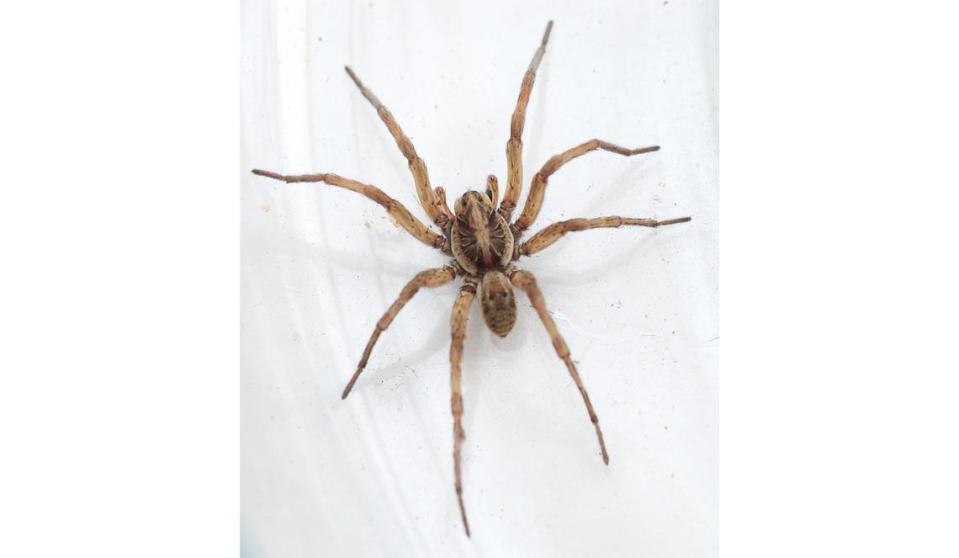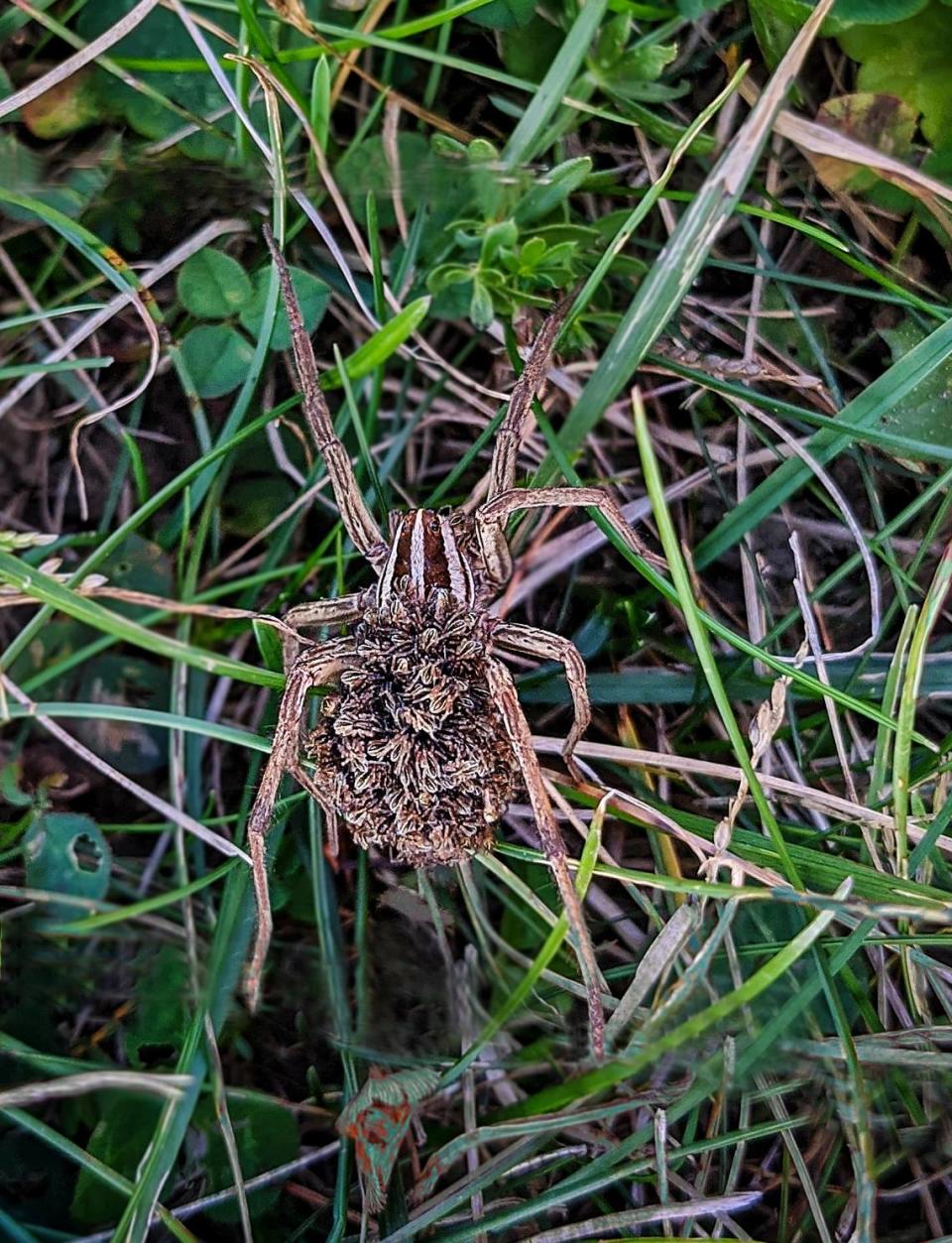SC one of few states with official spider and it hunts its prey. Is it dangerous to you?
Did you know that South Carolina has its own official state spider?
It’s the largest of its species and one of the biggest in the state. If caught off guard, spotting this arachnid in person might be quite a shock at first.
The Carolina wolf spider (Hogna carolinensis) was designated as the official state spider by Act Number 389 of 2000.

The state of South Carolina is just one of two states that recognizes a spider as an official state symbol, with the other being New Hampshire, which recognizes the Daring Jumping Spider, according to State Symbols USA.
The official designation was due to the efforts and initial suggestion of Skyler B. Hutto, who was a third grade student at Sheridan Elementary School in Orangeburg at the time.
What does it look like?
“This spider is large, hairy and fast,” according to InsectIdentification.
The Carolina wolf spider has a mottled brown and black body, which lets them easily camouflage themselves on forest floors; whereas, in more coastal climates, they can be much easier to spot on the sandy ground of coastal shorelines.
They have the ability to grow to be approximately 4 inches long, with males being smaller than the females.
“The head is slightly elevated by the eyes. The cephalothorax has a tan line down the center of it. The sides of the cephalothorax are dark brown or black with a lighter brown border on both edges. The abdomen is shaped like an almond. The top of the abdomen has a dark almond-shaped mark near the waist and a chevron pattern toward the rear. Females are generally darker and larger than males,” InsectIdentification states.
Are wolf spiders dangerous?
Known for their larger-than-average size, appearance, hostility, aggression, ambush hunting tactics and quick attacks, it wouldn’t be an uncommon occurrence to be scared if you come across a Carolina wolf spider, especially in close proximity.
“Like most animals, wolf spiders are known to attack when threatened, but they prefer to run and hide. However, despite its fast movements and frightening appearance, the wolf spider’s bite causes only mild effects, including swelling, itching and localized pain (while that of the brown recluse has the capability to cause tissue damage). If a bite occurs, and there are medical concerns, the person should seek medical attention,” according to Orkin.
While a bite from a Carolina wolf spider is not life-threatening, it doesn’t mean it is pleasant.
The bite from one of these spiders can commonly be familiarized with that of feeling like a bee sting. The pain remains localized, but an attack from one of these spiders could cause a fright in a child or adult alike.
What’s the likelihood of being bitten?
Although large, and maybe even a bit intimidating, the likelihood of being bitten by a Carolina wolf spider is quite small.
Since wolf spiders are so large, their bite may be painful, but pain, swelling, or itchiness around the bite shouldn’t have much longevity. Luckily, they are not generally aggressive and will likely choose to flee rather than attack if you happen to cross paths.
Carolina wolf spider facts
It is possible to spot a Carolina wolf spider during the day. However, this spider species is predominantly nocturnal, meaning most sightings occur at night when they are most active.
These spiders can live in practically any habitat and are often known for wandering indoors looking for something to eat.
Carolina wolf spiders generally prey on insects and other small invertebrates and typically dine on grasshoppers, crickets, palmetto bugs, beetles and even other spiders.
After mating, a female Carolina wolf spider will dig a hole in the ground that can be almost 8 inches deep. She then lines the hole with spider silk and covers the opening with plant debris and various fauna. This location is where she lays her eggs and wraps them in a silken sac. The female spider then carries this egg sac on her back wherever she goes until the spiderlings hatch. It is not unusual to see wolf spider mothers carry all of her small spiderlings on her abdomen, according to InsectIdentification. “When the egg yolk on which the young live is depleted, they begin eyeing each other as prey, then disperse to live on their own,” South Carolina Encyclopedia states.

Similar to tarantulas, the Carolina wolf spider will dig an underground burrow for their habitat rather than spin a web like most spiders.
Unlike most spiders that catch their prey in webs, Carolina wolf spiders are known ground hunters. They will actively hunt their prey, generally insects or other small critters, prove hostile in their attack, displaying a fearsome, venomous bite which paralyzes its prey and then consumes their meal. Their hunt is made much easier by their exceptional eyesight.

